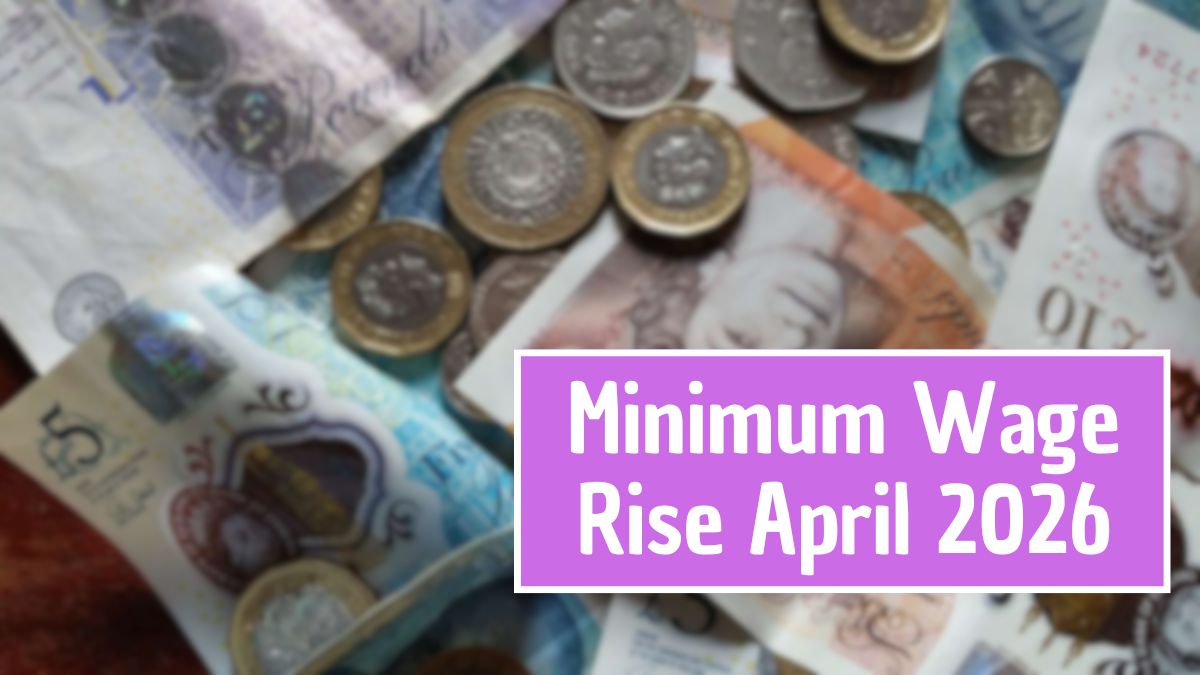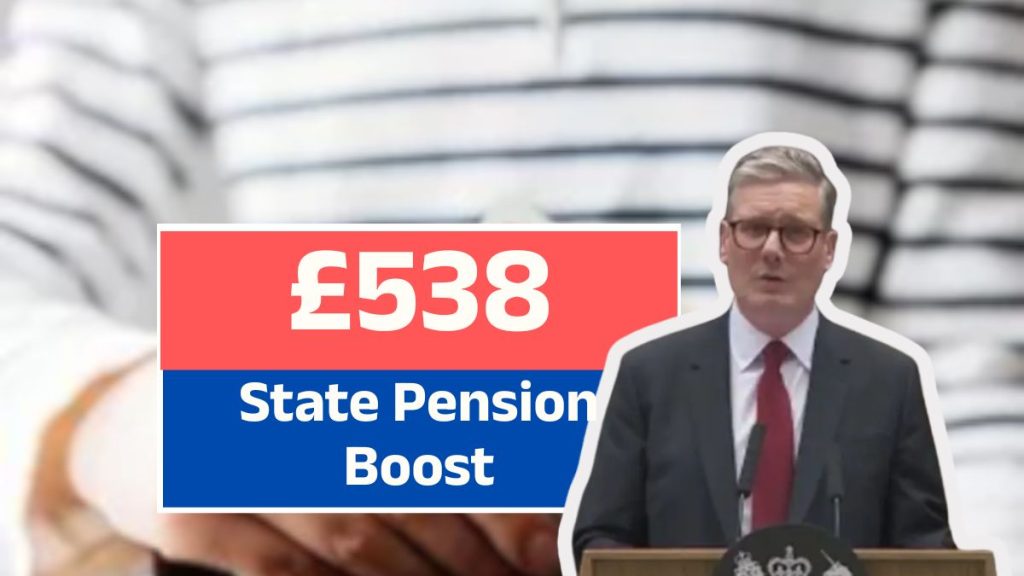The Department for Work and Pensions (DWP) has confirmed that millions of pensioners across the UK are set to receive a £538 annual boost to the State Pension from April 2026, thanks to the triple lock system.
Based on current projections, the full new State Pension will rise by around 4.5%, though the exact figure will depend on the September inflation rate (CPI) — the final data point before the government locks in next year’s increase.
For pensioners on the full new State Pension, that means an annual income of roughly £12,500, or about £240–£241 a week, offering a modest but much-needed lift amid ongoing living cost pressures
Understanding the 2026 Pension Boost
The confirmed rise represents another year under the triple lock, a mechanism that guarantees pensions increase by the highest of three factors:
- Average wage growth
- September’s Consumer Price Index (CPI) inflation
- 2.5% minimum floor
At present, wage growth is leading — expected to land around 4.6% — but if September’s CPI figure surpasses that, inflation will determine the final increase. The announcement of the official rate is expected in autumn 2025, following the release of the inflation data.
Overview: What Pensioners Can Expect
| Item | Details (April 2026) |
|---|---|
| Annual Boost | About £538 per year on the full new State Pension |
| New Weekly Rate | Rising from £230.25 to roughly £240–£241 per week |
| Calculation Basis | Triple lock (highest of earnings, inflation, or 2.5%) |
| Confirmation Date | After September 2025 CPI release |
| Applies To | Both new and basic State Pension (percentage increase equal) |
What the Increase Means for Retirees
For retirees on the full new State Pension, the 2026 rise will translate to an extra £10–£11 per week — enough to cover modest daily expenses such as energy or groceries.
While this isn’t a windfall, the automatic increase helps pensioners’ incomes keep pace with economic conditions, ensuring they don’t lose value to inflation or stagnant wages.
Those on the basic State Pension (the pre-2016 system) will also benefit from the same percentage increase, though the cash gain will be smaller due to their lower starting amount.
Why the Triple Lock Matters
The triple lock was introduced in 2010 to protect the State Pension’s value and prevent it from falling behind inflation or wage growth. It ensures that each April, the State Pension rises by whichever of the following is highest:
- Average UK wage growth
- Inflation (as measured by September CPI)
- 2.5%
This mechanism has been especially important during years of high inflation or wage surges, ensuring pensioners’ income keeps up with living costs.
For 2026, with wages still growing faster than prices, the earnings element is expected to determine the increase — unless inflation unexpectedly rises later in 2025.
What the £538 Increase Looks Like in Real Terms
Under current projections, here’s how the new rates may look from April 2026:
- Full New State Pension:
- 2025 rate: £230.25 per week
- 2026 rate: approximately £240–£241 per week
- Annual total: around £12,450–£12,510
- Basic State Pension:
- 2025 rate: £176.45 per week
- 2026 rate: approximately £184–£185 per week
- Annual total: around £9,600–£9,620
Both systems rise by the same percentage, but since the basic State Pension starts from a lower base, its recipients see a smaller cash increase even though the uplift rate is equal.
Who Will Receive the Pension Boost?
The 2026 increase will apply to all pensioners receiving the State Pension, whether on the new system (post-2016) or the basic system (pre-2016).
Recipients include:
- Those already claiming the State Pension by April 2026.
- Pensioners living in the UK, Isle of Man, or Channel Islands.
- Certain overseas pensioners in countries with reciprocal agreements that allow annual uprating.
Importantly, no action is needed to receive the increase — payments will adjust automatically in April 2026.
When Will the Final Rate Be Announced?
The official announcement of the 2026 State Pension increase will come in autumn 2025, following the publication of September’s CPI inflation data.
This figure determines whether inflation overtakes wage growth as the leading factor under the triple lock. Once the decision is confirmed, the DWP and HM Treasury will release the new weekly and annual rates, which then take effect from April 2026.
Comparing the Basic and New State Pension
The basic State Pension applies to people who reached pension age before 6 April 2016, while the new State Pension applies to those who reached it after that date.
Though both follow the same annual percentage increase, the starting amounts differ significantly:
- The new system offers higher baseline payments but requires at least 35 years of National Insurance contributions.
- The basic system provides less but can include additional earnings-related entitlements, such as SERPS or State Second Pension (S2P).
Thus, while both groups benefit from the same percentage uplift, the absolute cash gain (such as £538) will be larger for new pensioners on the higher base rate.
How the Increase Reflects the Cost of Living
Even with inflation easing from previous peaks, pensioners continue to feel the pinch from high energy bills, grocery prices, and housing costs.
The triple lock helps cushion the impact, but experts warn that the real value of the State Pension remains under pressure.
According to the Office for National Statistics (ONS), essentials like food and transport have risen at faster rates than average inflation, meaning that even a 4–5% increase may only offset recent cost spikes rather than improve financial comfort.
The Broader Context: A Challenging Economy for Retirees
Many retirees rely on the State Pension as their primary income source. As living costs remain stubbornly high, even modest increases like £538 can make a noticeable difference.
However, analysts warn that sustained inflation and energy volatility may continue to erode pensioners’ real purchasing power.
Financial experts recommend that retirees review additional income sources — such as workplace pensions, savings, or Pension Credit eligibility — to ensure long-term stability.
Practical Steps Pensioners Should Take
Although the increase is automatic, pensioners can still take proactive steps to maximize their retirement income:
- Check Your Pension Forecast:
Use the government’s online service to estimate your future payments and verify your entitlement. - Review Your National Insurance Record:
Make sure you have the required contribution years. You may still be able to fill gaps for previous years. - Apply for Pension Credit (if eligible):
Around 850,000 eligible pensioners don’t claim this top-up, which can increase income and unlock other benefits such as free TV licences and council tax reductions. - Stay Alert for Fraud:
DWP will never contact you asking for personal or banking details to process your increase. Be cautious of scams posing as official communications.
The Bigger Picture: Government Commitment to the Triple Lock
The 2026 increase marks yet another year of the government’s continued commitment to the triple lock policy, which has faced debate over affordability amid fiscal pressures.
Critics argue that maintaining the triple lock could strain public finances, while supporters highlight its vital role in preventing pensioner poverty.
So far, the government has reaffirmed that the triple lock will remain in place through at least 2026, ensuring pensioners’ incomes grow in line with economic indicators.
(5) Frequently Asked Questions (FAQs)
1. How much will the State Pension increase by in 2026?
The DWP projects around a 4.5% rise, translating to an increase of about £538 per year for those on the full new State Pension.
2. When will the new pension rates take effect?
The increase will apply automatically from April 2026, following the final announcement in autumn 2025.
3. Do I need to apply to receive the pension increase?
No. The uplift is automatic, applied directly to all eligible pension payments.
4. Will both new and basic State Pensions rise by the same amount?
Both will increase by the same percentage, but the cash amount will differ because the basic State Pension starts from a lower base rate.
5. What determines how much the pension rises each year?
The triple lock formula ensures pensions increase by the highest of average earnings growth, inflation (September CPI), or 2.5%, whichever is greatest


















